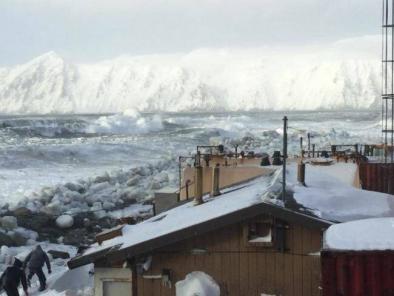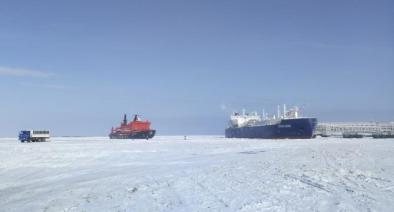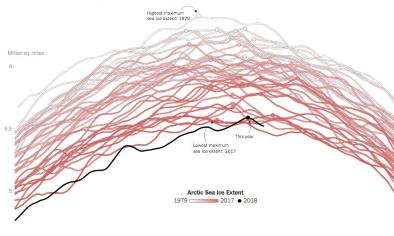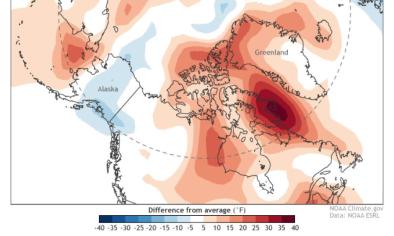Both Poles Are Having a Weird, Bad Year For Sea Ice So Far
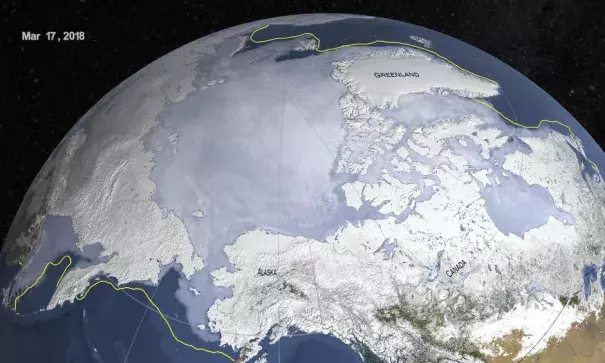
As Americans were donning green shirts and tossing back pints of Guinness, the Arctic was limping toward its annual wintertime sea ice maximum. According to data released Friday by the National Snow and Ice Data Center, it was the second-lowest annual maximum on record.
Sea ice in the Arctic very likely peaked on March 17 at 5.6 million square miles (14.5 million square kilometers), just 450,000 square miles above its maximum extent in 2017. That was the poorest wintertime sea ice showing since satellite record-keeping began in 1979. The four lowest peaks on record? 2015, 2016, 2017 and 2018. It’s almost as if we’re experiencing some sort of trend.
...
Per the NSDIC, it’s the third winter in a row that heat waves like this have been observed over the Arctic Ocean.
While the Arctic is no stranger to occasional wintertime heat waves driven by the advection of warm and moist air polewards, many scientists saw this year’s hot-spell as a harbinger of human-caused climate change. And the long-term pattern of declining sea ice in the Arctic is very clearly climate-driven.
Last December, a report by the National Oceanic Atmospheric Administration found that Arctic sea ice is shrinking faster and reaching lower lows than it has anytime in the past 1,500 years as climate change causes the region to warm twice as fast as the global average.
Antarctic sea ice also veered into near record-low territory this year, although the reasons aren’t as clear cut. For the second year in a row, the sea ice rimming our planet’s southernmost continent plunged, reaching a summertime minimum of 842,000 square miles on Feb. 20-21. It was the second lowest minimum on record, just 27,00 square miles above a record low set last March.
Unlike the Arctic, which has seen dramatic sea ice declines in recent decades, Antarctic sea ice has been slowly but steadily increasing, with the exception of the last few years. Last year’s sea ice plunge, deemed “very unusual” by Antarctic ice researchers, was later attributed to a series of remarkably powerful storms driven by natural variability.
Julienne Stroeve, a sea ice researcher at the National Snow and Ice Data Center, told Earther in an email that she “wouldn’t make too much of the low ice conditions” in the Antarctic, noting that sea ice is highly variable year to year.
Related Content
